85% Carbon Reduction Potential for Buildings
- Gregers Reimann
- Nov 29, 2021
- 3 min read
Updated: Feb 21, 2022
We can calculate the carbon reduction of your building. In fact, green building certification schemes are increasingly requiring lifecycle assessment (LCA) of construction projects, for which the carbon footprint is one of the six environmental parameters to be evaluated. In our recent LEED building submission projects, we achieved a 10% reduction in the carbon footprint, mostly from replacing normal construction materials with low-carbon alternatives. Interestingly, there is a much larger carbon reduction potential of 85% for the building sector once we look a bit into the future.
Following the framework of the newly launched malaysiaGBC Carbon Score scheme, below we have examined the main parameters influencing the carbon footprint of buildings:
Energy efficient building design
100% renewable electricity from the grid
Electric vehicles on 100% renewable electricity
Low-carbon wooden structural material
When applying the above four low-carbon measures, a whooping 85% reduction in the building carbon footprint is observed:
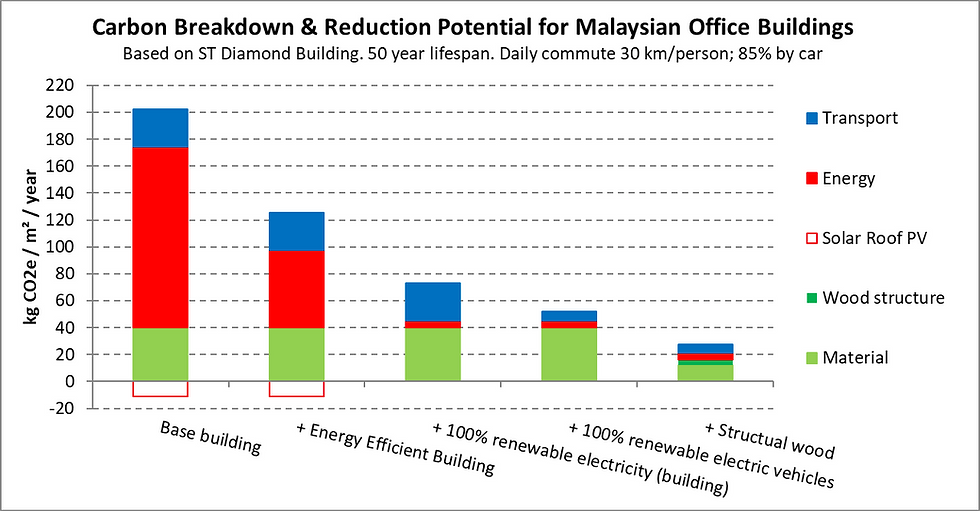
The graph shows major carbon footprint reductions from energy efficiency, from clean renewable electricity, from shifting to electric vehicles powered by renewable energy, and lastly, by using low-carbon wooden structural systems. The graph also shows that the roof mounted solar photovoltaic (PV) system will cease to reduce the carbon footprint, once the grid electricity comes 100% from renewable energy. The logic being that solar panels on the roof of the building will have approximately the same carbon footprint per kWh as electricity coming from solar farms.
The carbon calculation example is based on the energy efficient ST Diamond office building, one of the early green building landmark projects in Malaysia. While our calculations are based on actual measured energy consumption, we had to draw upon international material databases to establish the environmental impact from the building materials. Moreover, the daily commuting figures are based on the best available data.
In the following, each of the carbon footprint reduction potentials in the above graph will be expanded upon.
Energy efficient buildings
The ST Diamond building has measured building energy intensity (BEI) of 70 kWh/m2/year, which is 1/3 of typical office buildings with a BEI of 210 kWh/m2/year. The thin film solar photovoltaic (PV) panels of the ST Diamond building produce about 10% of the building's electricity consumption, hence, lowering the BEI to 63 kWh/m2/year once the contribution from the roof solar system is included.
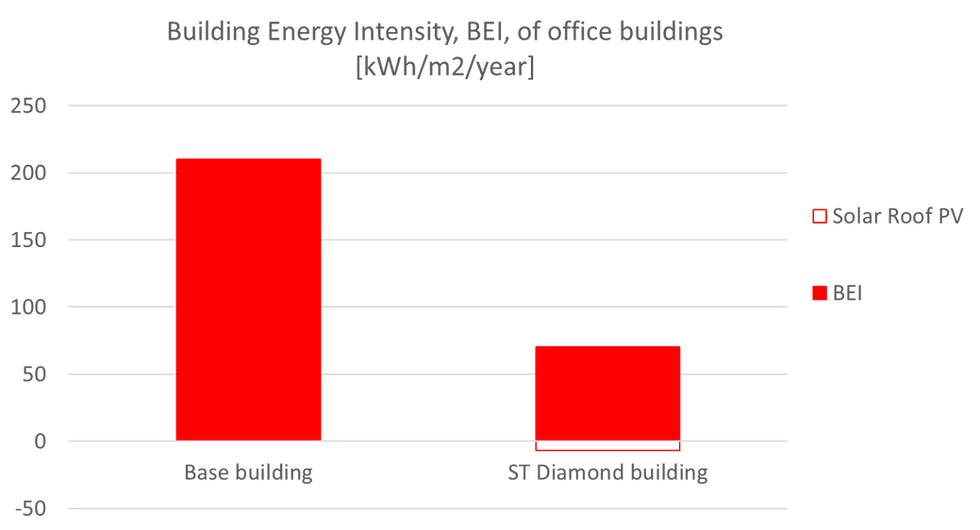
The energy bills of the energy efficient ST Diamond building show a 2/3 reduction in the energy consumption compared to typical office buildings in Malaysia.
100% Renewable Electricity
In the future, we will see that the electric grid will increasingly be powered by renewable energy. In fact, the latest data from Europe shows that this shift is well on the way already:
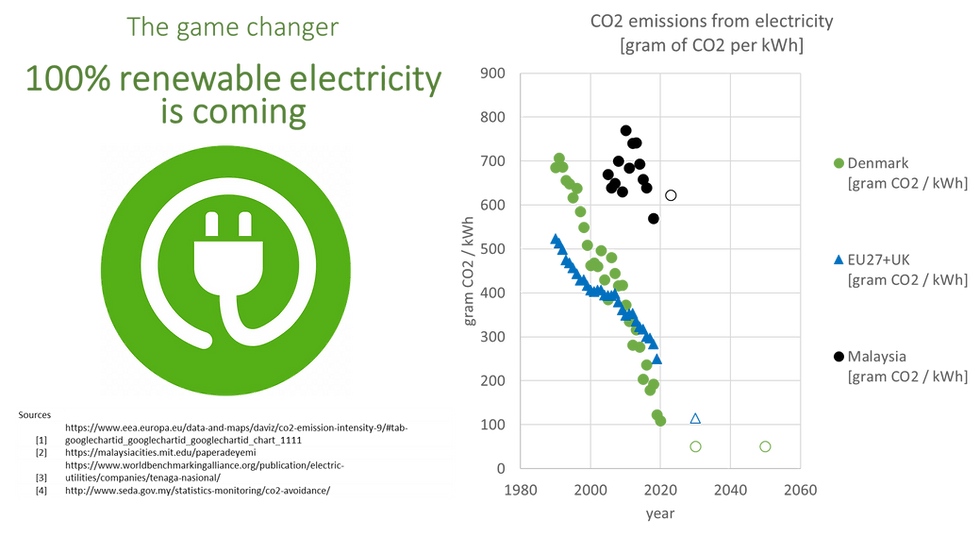
The graph shows a rapid reduction in carbon emissions from electricity is already underway in Europe. For example, Denmark has already seen a 7-fold decrease in the carbon emissions from 1990 (700 gram CO2/kWh) to 2000 (105 gram CO2/kWh). Malaysia will likely see a similar trend in the coming years as solar photovoltaic power already today has reached grid parity and is projected to become cheaper and cheaper over the next decade.
Low-carbon building materials
Our LCA analysis for the 7-storey ST Diamond building materials shows that 93% of the carbon footprint comes from the structural building materials, namely from the concrete and the steel reinforcement.
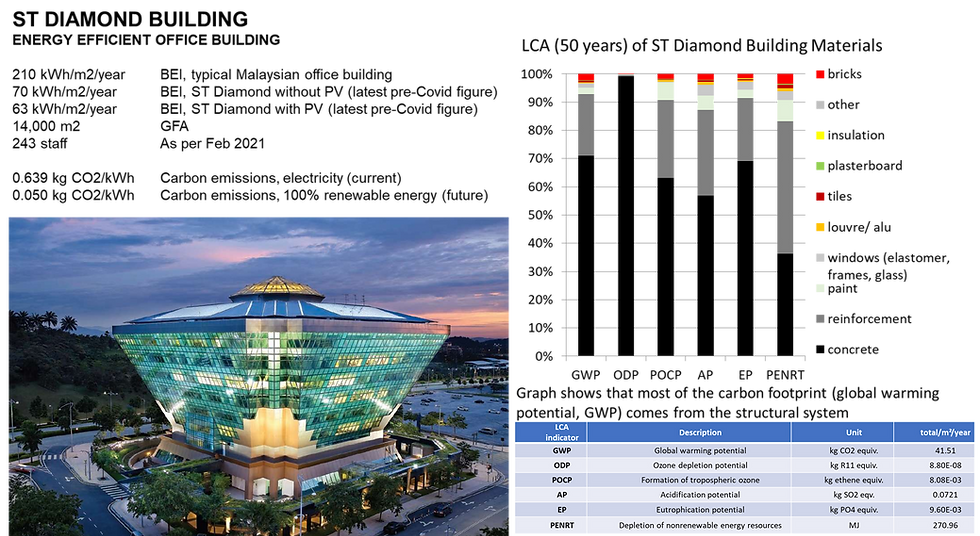
In a future scenario, where the electric power grid runs on 100% renewable electricity and people have switched to electric vehicles, 77% of the lifecycle carbon emissions will come from the building materials themselves. It is therefore paramount to use low-carbon building materials, the biggest source of carbon emissions once the switch to renewable electricity occurs in earnest.
It is possible to use wood for the structural system of buildings. Several buildings 10-storeys or higher have already been built around the World, such as in Norway and Australia. Wood stores carbon and therefore has the potential of achieving a negative carbon footprint from day one. However, the energy used during manufacture, transport and construction often gives wooden construction, such as cross-laminated timber (CLT), glulam and/or mass engineered timber (MET), a slightly positive carbon footprint, though, much lower than the carbon footprint of conventional concrete and steel construction.
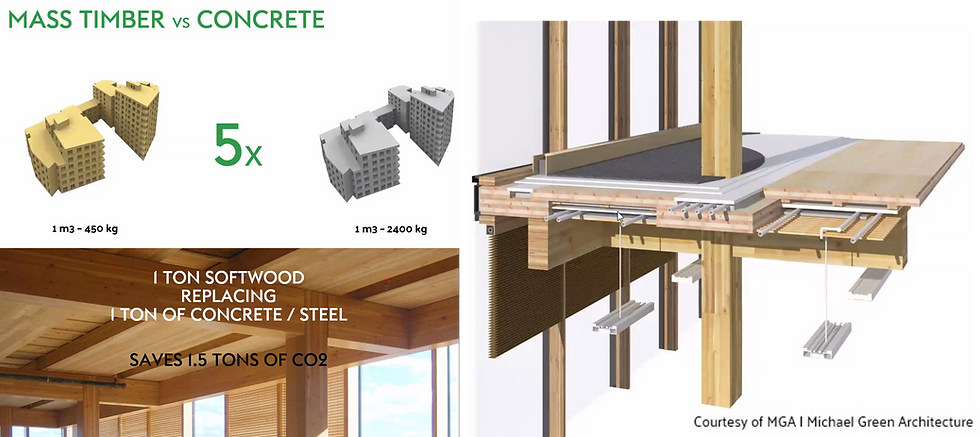
Replacing the concrete/steel structural system of the ST Diamond building with cross-laminated timber (CLT) would achieve 70% reduction in the carbon footprint of the building materials.
At the moment, structural wooden construction is not done in Malaysia, partly over fear of termite and high humidity, and partly because it is not allowed by the fire code. But there is good news on both fronts. Termite and humidity issues can be resolved, and we have been told that the next update of the Malaysia Unified Building By-Laws will allow for structural wood, insofar performance fire testing is undertaken for approval by the fire authorities (Bomba).
A condensed version of this article was published in the @Green magazine, January-February 2022 issue, page 21, refer to downloadable pdf article below:
The entire @Green magazine can be read online here: https://joom.ag/hwid

Comments